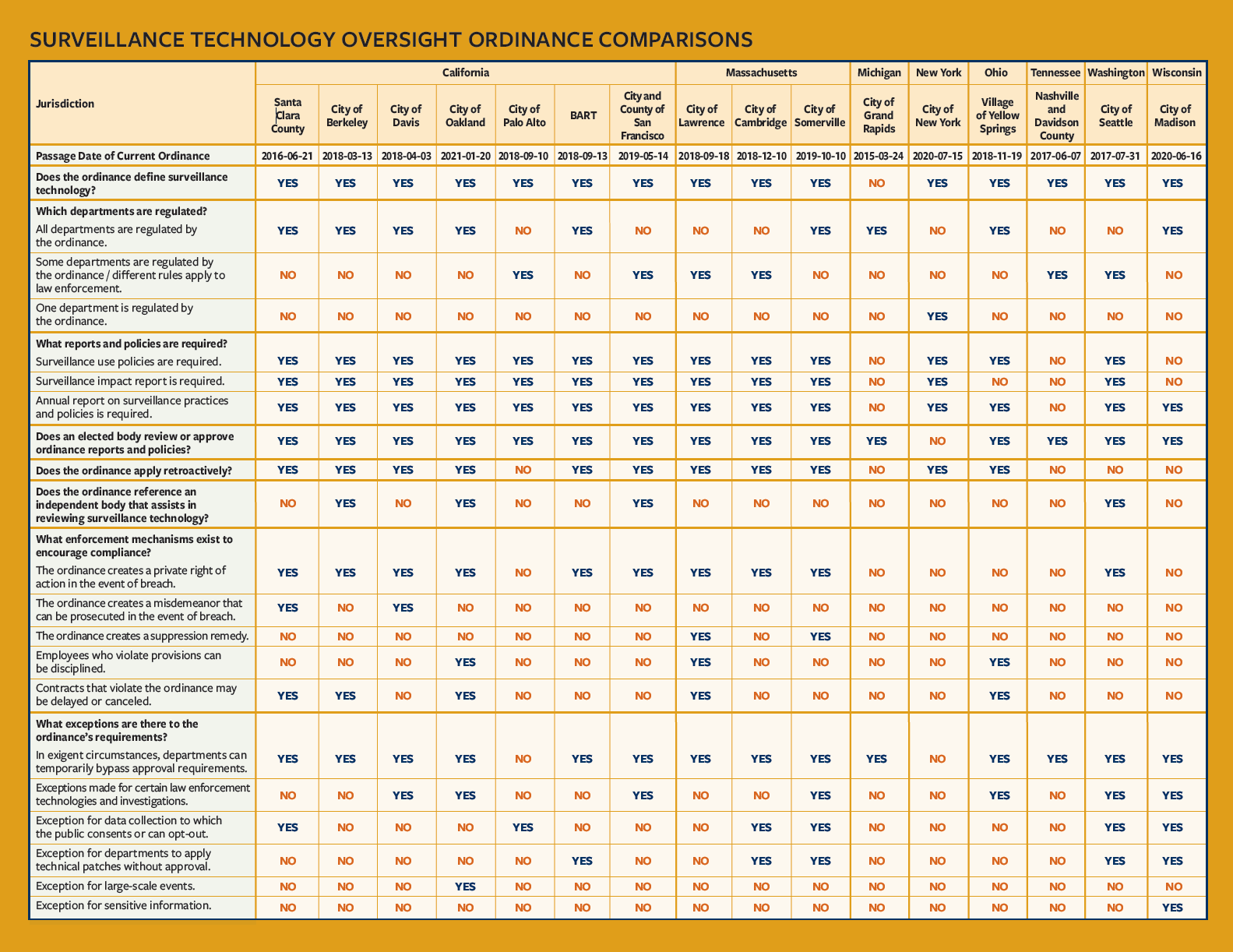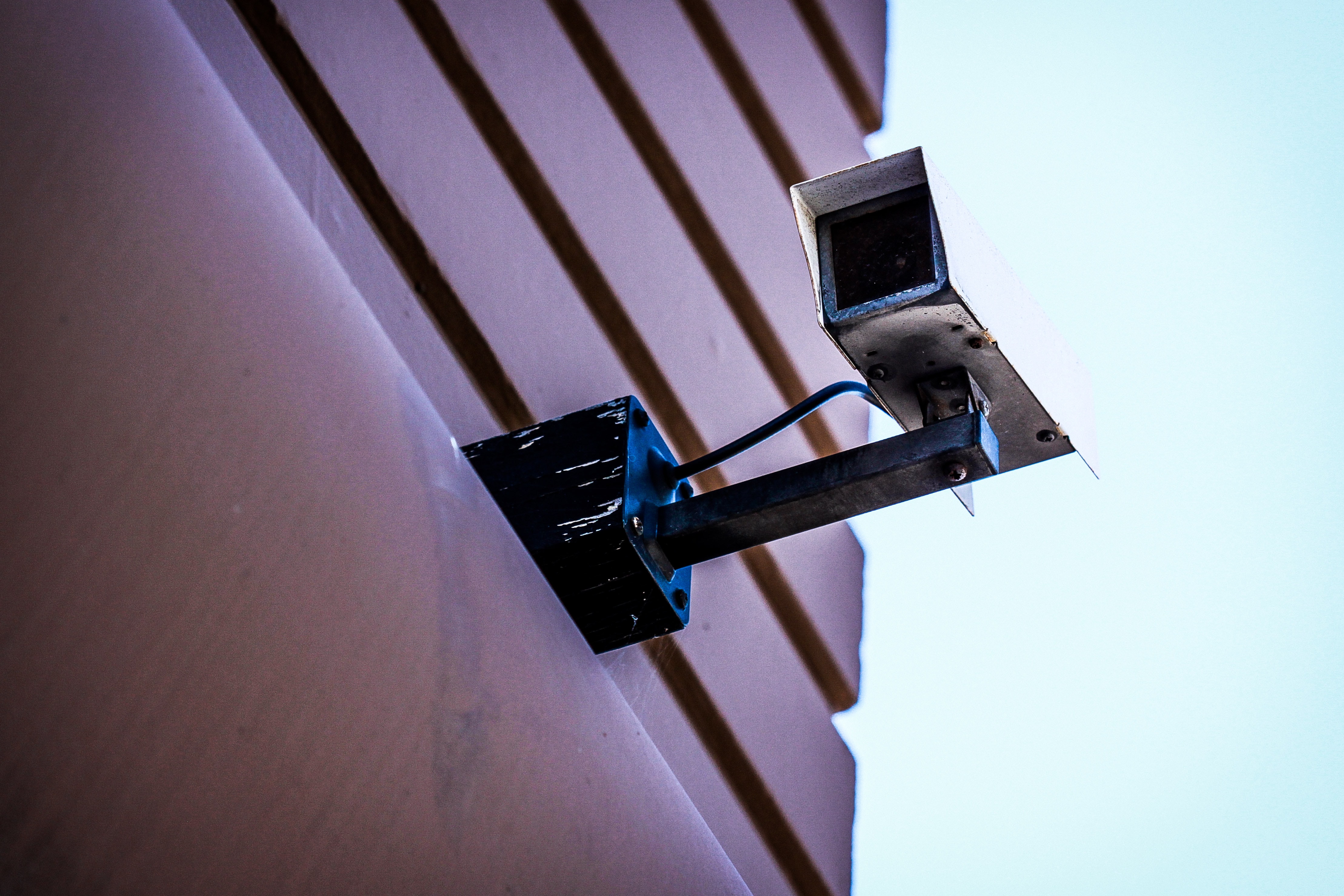How San Diego's Privacy Law Stacks Up Against 16 Others

This informative whitepaper from Berkeley sheds very helpful light on how San Diego's new surveillance ordinance would stack up in comparison to laws in 16 other jurisdictions across the country, who have already established surveillance technology oversight.

The white paper goes in to further detail of each category, but the above table summarizes their findings. So, what would San Diego's column look like, had it been included?
San Diego's ordinances were based on the Oakland ordinance, so most of the responses for Oakland would be the same for San Diego. One notable exception to this would be the "Exception for large scale events" row, which is part of Oakland's ordinance but was specifically excluded from San Diego's ordinance.
But there is another troubling difference that sets San Diego's proposed surveillance ordinance apart from others. After the ordinances were drafted by the community through the TRUST SD Coalition, they were submitted to city officials to go through a standard process of legal review and approval. During that process, City Attorney Mara Elliott proposed a new exclusion into the surveillance ordinance. Here's what it says:
No confidential or sensitive information should be disclosed that would violate any applicable law or would undermine the legitimate security interests of the City.
This new exclusion was added to the surveillance ordinance by the city attorney not once, not twice, but in nine different places throughout the surveillance ordinance. The city attorney's office did not collaborate with the community on the new exclusion, and the TRUST SD Coalition representing many community groups raised it as a problem when the ordinance was debated and ultimately approved by San Diego City Council.
If the finalized ordinance does contain this exclusion, it would allow the city's departments to use their own judgement on when to withhold information from City Council's oversight. If a department staffer personally believes it is within the city's "legitimate security interests" to do so, there would be nothing to stop that staffer from making such a decision unilaterally. There is no definition of what constitutes a legitimate security interest, so each case would be entirely subjective. This troubling provision would be entirely unique to the San Diego ordinance.
We'll be writing more about the "legitimate security interest" poison that was added to San Diego's surveillance ordinance. In the meantime, here are other key takeaways we see in Berkeley's analysis.
- We see once again that New York's approach is unique, in that it established oversight over only one agency (police) and did not really setup any body to review or approve technology proposals from that agency. New York instead relies on public feedback, which the police promise to take under advisement.
- Only four cities decided to go with an independent body or review board to assist in vetting proposals from departments. When it is finally established, San Diego's Privacy Advisory Board will be the fifth such body in the nation.
- Only one of the 16 cities, Madison, has provided for an exception for "sensitive information" to be exempt from requirements of disclosure. However, unlike the San Diego exclusion for "legitimate security interests," Madison's ordinance requires that any such information withholding be reported and approved by city leadership. Madison's department staffers cannot simply withhold information silently, without any review or accountability, like has been proposed in San Diego.
- Only two jurisdictions, Somerville and Davis, created a "suppression remedy" in their ordinances. A suppression remedy "allows parties in lawsuits to seek to exclude evidence collected in violation of the ordinance," the authors write.



